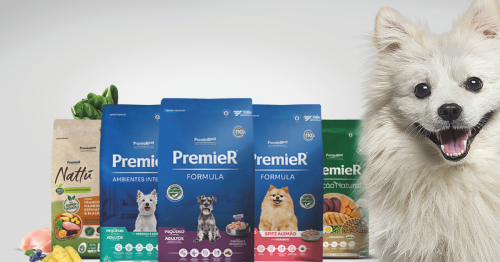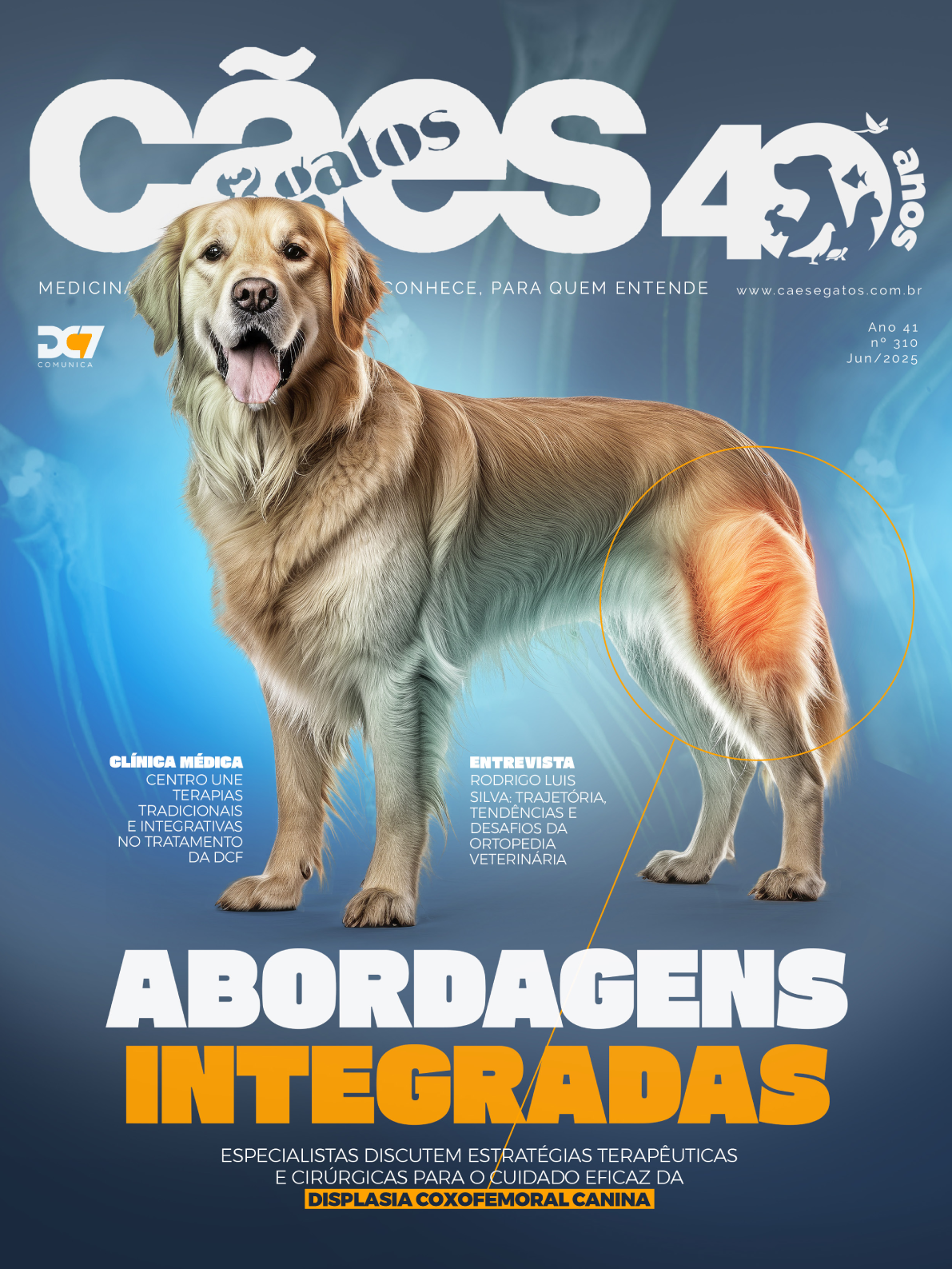Os ossos são fundamentais para a locomoção, proteção dos órgãos internos e possuem funções endócrinas para manter a homeostase óssea. As articulações são responsáveis por amortecer estresse mecânico (trauma), auxiliar na locomoção e sustentar o sistema musculoesquelético como um todo. Manter ossos e articulações saudáveis é um processo dinâmico e complexo, já que a deposição óssea (formação de novos materiais ósseos) e a reabsorção (degradação da matriz óssea para liberação de cálcio e fósforo) são processos contínuos que determinam a homeostase óssea [1].
Acesse o artigo completo na edição de fevereiro de 2025
Referências
[1] Lopez AN, Bazer FW, Wu G. Functions and Metabolism of Amino Acids in Bones and Joints of Cats and Dogs, 2024, p. 155–75. https://doi.org/10.1007/978-3-031-54192-6_7.
[2] Barbeau-Grégoire M, Otis C, Cournoyer A, Moreau M, Lussier B, Troncy E. A 2022 Systematic Review and Meta-Analysis of Enriched Therapeutic Diets and Nutraceuticals in Canine and Feline Osteoarthritis. Int J Mol Sci 2022;23. https://doi.org/10.3390/ijms231810384.
[3] Kalra EK. Nutraceutical: definition and introduction. AAPS PharmSci 2003;5:27–8. https://doi.org/10.1208/ps050325.
[4] Brasil. Instrução Normativa n. 30, de 5 de agosto de 2009. Brasília, DF: Diário Oficial da União, Seção 1.; 2009.
[5] Zainal Z, Longman AJ, Hurst S, Duggan K, Caterson B, Hughes CE, et al. Relative efficacies of omega-3 polyunsaturated fatty acids in reducing expression of key proteins in a model system for studying osteoarthritis. Osteoarthritis Cartilage 2009;17:896–905. https://doi.org/10.1016/j.joca.2008.12.009.
[6] Matta JA, Miyares RL, Ahern GP. TRPV1 is a novel target for omega‐3 polyunsaturated fatty acids. J Physiol 2007;578:397–411. https://doi.org/10.1113/jphysiol.2006.121988.
[7] Kelly S, Chapman RJ, Woodhams S, Sagar DR, Turner J, Burston JJ, et al. Increased function of pronociceptive TRPV1 at the level of the joint in a rat model of osteoarthritis pain. Ann Rheum Dis 2015;74:252–9. https://doi.org/10.1136/annrheumdis-2013-203413.
[8] Wen Z-H, Tang C-C, Chang Y-C, Huang S-Y, Hsieh S-P, Lee C-H, et al. Glucosamine sulfate reduces experimental osteoarthritis and nociception in rats: association with changes of mitogen-activated protein kinase in chondrocytes. Osteoarthritis Cartilage 2010;18:1192–202. https://doi.org/10.1016/j.joca.2010.05.012.
[9] Chan P-S, Caron JP, Orth MW, Chan PS, Center J, Ford H, et al. Short-term Gene Expression Changes in Cartilage Explants Stimulated with Interleukin 1ß plus Glucosamine and Chondroitin SulfateDownloaded on. J Rheumatol 2006;33:1329–40.
[10] Largo R, Alvarez-Soria MA, Dı́ez-Ortego I, Calvo E, Sánchez-Pernaute O, Egido J, et al. Glucosamine inhibits IL-1β-induced NFκB activation in human osteoarthritic chondrocytes. Osteoarthritis Cartilage 2003;11:290–8. https://doi.org/10.1016/S1063-4584(03)00028-1.
[11] Wandel S, Juni P, Tendal B, Nuesch E, Villiger PM, Welton NJ, et al. Effects of glucosamine, chondroitin, or placebo in patients with osteoarthritis of hip or knee: network meta-analysis. BMJ 2010;341:c4675–c4675. https://doi.org/10.1136/bmj.c4675.
[12] Oesser S, Seifert J. Stimulation of type II collagen biosynthesis and secretion in bovine chondrocytes cultured with degraded collagen. Cell Tissue Res 2003;311:393–9. https://doi.org/10.1007/s00441-003-0702-8.
[13] Isaka S, Someya A, Nakamura S, Naito K, Nozawa M, Inoue N, et al. Evaluation of the effect of oral administration of collagen peptides on an experimental rat osteoarthritis model. Exp Ther Med 2017;13:2699–706. https://doi.org/10.3892/etm.2017.4310.
[14] Tong T, Zhao W, Wu Y-Q, Chang Y, Wang Q-T, Zhang L-L, et al. Chicken type II collagen induced immune balance of main subtype of helper T cells in mesenteric lymph node lymphocytes in rats with collagen-induced arthritis. Inflammation Research 2010;59:369–77. https://doi.org/10.1007/s00011-009-0109-4.
[15] Park K-S, Park M-J, Cho M-L, Kwok S-K, Ju JH, Ko H-J, et al. Type II collagen oral tolerance; mechanism and role in collagen-induced arthritis and rheumatoid arthritis. Mod Rheumatol 2009;19:581–9. https://doi.org/10.1007/s10165-009-0210-0.
[16] Zhu P, Li X-Y, Wang H-K, Jia J-F, Zheng Z-H, Ding J, et al. Oral administration of type-II collagen peptide 250–270 suppresses specific cellular and humoral immune response in collagen-induced arthritis. Clinical Immunology 2007;122:75–84. https://doi.org/10.1016/j.clim.2006.08.004.
[17] Deparle LA, Gupta RC, Canerdy TD, Goad JT, D’Altilio M, Bagchi M, et al. Efficacy and safety of glycosylated undenatured type-II collagen (UC-II) in therapy of arthritic dogs. J Vet Pharmacol Ther, vol. 28, 2005, p. 385–90. https://doi.org/10.1111/j.1365-2885.2005.00668.x.
[18] Beynen. Oral Administration of Gelatin Hydrolysate Reduces Clinical Signs of Canine Osteoarthritis in a Double-Blind, Placebo-Controlled Trial. Am J Anim Vet Sci 2010;5:102–6. https://doi.org/10.3844/ajavsp.2010.102.106.
[19] PEAL A, D’ALTILIO M, SIMMS C, ALVEY M, GUPTA RC, GOAD JT, et al. Therapeutic efficacy and safety of undenatured type‐II collagen (UC‐II) alone or in combination with (−)‐hydroxycitric acid and chromemate in arthritic dogs 1. J Vet Pharmacol Ther 2007;30:275–8. https://doi.org/10.1111/j.1365-2885.2007.00844.x.
[20] Gupta RC, Canerdy TD, Lindley J, Konemann M, Minniear J, Carroll BA, et al. Comparative therapeutic efficacy and safety of type-II collagen (uc-II), glucosamine and chondroitin in arthritic dogs: Pain evaluation by ground force plate. J Anim Physiol Anim Nutr (Berl) 2012;96:770–7. https://doi.org/10.1111/j.1439-0396.2011.01166.x.
[21] Stabile M, Samarelli R, Trerotoli P, Fracassi L, Lacitignola L, Crovace A, et al. Evaluation of the effects of undenatured type II collagen (UC-II) as compared to robenacoxib on the mobility impairment induced by osteoarthritis in dogs. Vet Sci 2019;6. https://doi.org/10.3390/VETSCI6030072.
[22] Urits I, Gress K, Charipova K, Habib K, Lee D, Lee C, et al. Use of cannabidiol (CBD) for the treatment of chronic pain. Best Pract Res Clin Anaesthesiol 2020;34:463–77. https://doi.org/10.1016/j.bpa.2020.06.004.
[23] Vučković S, Srebro D, Vujović KS, Vučetić Č, Prostran M. Cannabinoids and Pain: New Insights From Old Molecules. Front Pharmacol 2018;9. https://doi.org/10.3389/fphar.2018.01259.
[24] Peng J, Fan M, An C, Ni F, Huang W, Luo J. A narrative review of molecular mechanism and therapeutic effect of cannabidiol (CBD). Basic Clin Pharmacol Toxicol 2022;130:439–56. https://doi.org/10.1111/bcpt.13710.
[25] Fahmi H, Martel-Pelletier J, Pelletier J-P, Kapoor M. Peroxisome proliferator-activated receptor gamma in osteoarthritis. Mod Rheumatol 2011;21:1–9. https://doi.org/10.1007/s10165-010-0347-x.










